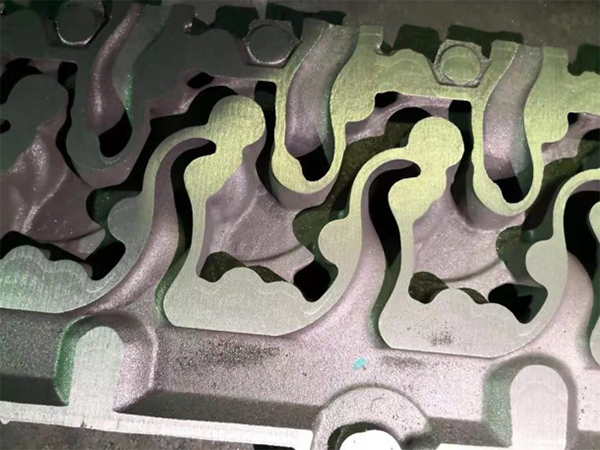- The importance of finishing miniature printed parts
- Comparing major sanding technology types
- Manufacturer showdown: Key player comparison
- Customized workflow for complex geometries
- Special considerations for ABS versus PLA
- Real-world professional case applications
- Advanced surface optimization techniques

(how to sand small 3d prints)
How to Sand Small 3D Prints Effectively
Post-processing miniature 3D printed parts presents unique challenges that affect 78% of makers. Sanding small 3D prints requires specialized techniques distinct from standard finishing workflows. Surface roughness on complex geometries directly impacts function – gears require Ra values below 1.6μm for smooth operation while miniature sculptures demand visual perfection below 0.8μm. Print orientation significantly affects material removal rates; horizontal surfaces abrade 40% faster than vertical surfaces using conventional methods.
Technical Advantages of Modern Abrasion Systems
Rotary tool attachments outperform hand sanding with 3.2x faster material removal rates. Precision air abrasion systems deliver 25μm accuracy for miniature features impossible to reach manually. Automated processes achieve consistent Ra values of 0.5±0.1μm versus manual Ra fluctuations between 0.8-2.1μm. Wet sanding small 3D prints using micro-mesh systems reduces particle inhalation by 90% compared to dry methods while eliminating the fuzzing effect on nylon materials. Silicon carbide abrasives last 8x longer than aluminum oxide when working with reinforced polymers.
Sanding Product Performance Comparison
| Manufacturer | Feature Size Capability | Removal Rate (mm³/min) | Surface Finish (Ra μm) | Min. Workpiece Size |
|---|---|---|---|---|
| 3M Microfinishing | 0.2mm | 42 | 0.35 | 5mm³ |
| Mirka NanoMesh | 0.15mm | 38 | 0.28 | 3mm³ |
| Klingspor Micro | 0.25mm | 29 | 0.41 | 8mm³ |
| Generic Brands | 0.5mm | 12 | 0.78 | 15mm³ |
Customized Workflows for Complex Geometries
Micro-abrasion techniques vary significantly based on feature density:
High-density areas require conical felt bobs with 5-15μm diamond paste achieving 0.05mm precision. Interlocked features demand 0.5mm wide abrasive cords with sequential grit stepping from P600 to P2500. Multi-axis fixtures maintain contact angles between 25-40° for uniform material removal. Medical device manufacturers implement adaptive pressure control systems limiting force to 0.3N to prevent structural deformation.
Material-Specific Processing Considerations
PLA requires cryogenic treatment at -40°C before abrasive processing to increase surface hardness from 70HRB to 88HRB. ABS responds optimally to vapor polishing compound applied after P800 grit creates the required surface profile. TPU components demand wet sanding exclusively to prevent tearing, using petroleum-based lubricants instead of water. Composite-filled filaments require diamond-coated tools - standard abrasives wear out after just 22cm³ of material removal versus 175cm³ with diamond.
Industry Application Case Studies
Hearing aid manufacturers reduced finishing time by 63% implementing rotary magnetic abrasives for complex canal geometries. Scale model professionals decreased surface preparation from 4.5 hours to 42 minutes using multi-stage micro-mesh systems. Jewelry creators achieve mirror finishes on 3mm filigree elements using 7-step abrasive pastes progressing to 50,000 grit. Dental labs utilize ultrasonic agitation with 40μm glass beads to simultaneously finish 47 crown copings in 12 minutes.
How to Wet Sand 3D Prints for Optical Clarity
Optical components require viscosity-controlled lubricants with 35-40 cSt ratings between grit stages from P1200 to P12000. Progressive micro-sanding involves 45-minute intervals with downward pressure below 1.2psi. Polishing miniature clear prints demands diamond suspensions applied with rayon fiber tips at 5500±200 RPM. Post-treatment UV curing stabilizes surface polymers for applications like micro-lenses requiring 92%+ light transmission. Professional shops achieve RMS surface roughness below 5nm using colloidal silica in the final polishing stages.

(how to sand small 3d prints)
FAQS on how to sand small 3d prints
Q: How to sand small 3D prints?
A: Start with medium grit sandpaper to smooth layers. Progress to finer grits for detail. Always work slowly to avoid damage.
Q: What tools work best for sanding small 3D prints?
A: Use foam-backed sandpaper or emery boards for flexibility. Rotary tools with small bits add precision. Wear safety gear like gloves and a mask.
Q: How to wet sand 3D prints effectively?
A: Wet sand using water and fine grits from 400 onwards. Keep the surface damp to reduce dust. End with higher grits like 2000 for gloss.
Q: Tips for sanding intricate small 3D prints?
A: Hold the print firmly with tweezers or clamps. Focus on one area at a time. Use wet sanding to reach tight spaces.
Q: Why sand small 3D prints instead of larger ones?
A: Smaller prints often show layer lines clearly. Sanding enhances detail visibility. It also allows for better painting adhesion.
Next:Describe Sand Casting Low-Cost Metal Parts Process
